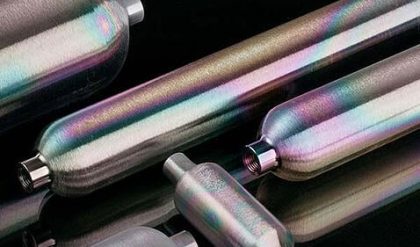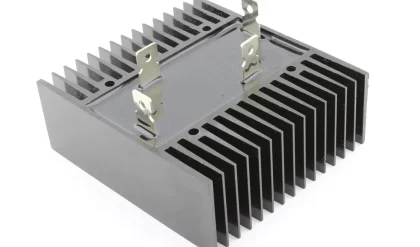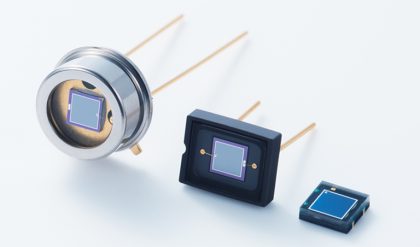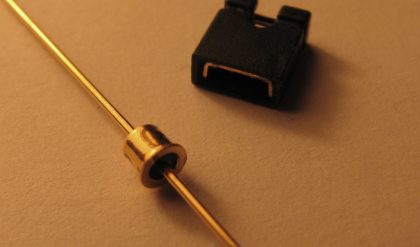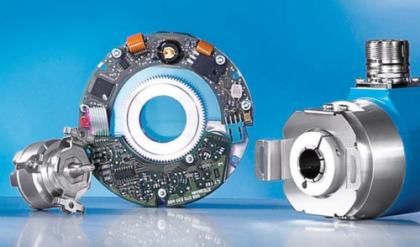A diode is a unidirectional two terminal device which is formed by the combination of p type semiconductor and n type semiconductor regions. Now, an ideal diode means a perfect diode which has all properties in their perfect sense without any flaws. Usually, the diodes operate either in forward or reverse- biased condition. As a result, even the characteristics which are expected to be exhibited by the ideal diode can be analyzed separately for these two modes of operation.
Characteristics of Ideal Diode when Forward Biased

Zero Resistance An ideal diode is expected to offer no resistance to the flow of current through it when working in forward biased mode. This means that the ideal diode will be a perfect conductor when forward biased. From this property of the ideal diode, one can infer that the ideal diodes do not have any barrier potential. This in turn leaves one to wonder on whether they possess depletion region or not. The reason behind this thought is attributed to the fact that the resistance offered is due to the presence of immobile charges which dwell in the depletion region of the diode.
Infinite Amount of Current This property of the ideal diode can be directly implied from its previous property which states that the ideal diodes offer zero resistance when forward biased. The reason can be explained as follows. In electronic devices, the relationship between the current (I), voltage (V) and resistance (R) is expressed by Ohm’s law which is stated as I = V/R. Now, if R = 0, then I = ∞. This indicates that there is no higher limit for the current which can flow through the forward-biased ideal diode.
Zero Threshold Voltage Even this characteristic of the ideal diode under the forward biased state can be referred from its first property of possessing zero resistance. This is because threshold voltage is the minimum voltage which is required to be provided to the diode to overcome its barrier potential and to start conducting. Now, if the ideal diode is void of depletion region itself, then the question of threshold voltage does not arise at all. This property of the ideal diode makes them conduct right at the instant of being biased, leading to the green-curve of Figure 1 which shows the diode characteristics.

Characteristics of Ideal Diode when Reverse Biased

Infinite Resistance An ideal diode is expected to fully inhibit the flow of current through it under reverse biased condition. In other words it is expected to mimic the behavior of a perfect insulator when reverse biased.
Zero Reverse Leakage Current This property of the ideal diode can be directly implied from its previous property which states that the ideal diodes possess infinite resistance when operating in reverse biased mode. The reason can be understood by considering the Ohm’s law again which now takes the form ![]() (shown by red-curve in Figure 1). Thus it means that there will be no current flowing through the ideal diode when it is reverse biased, no matter how high the reverse voltage applied be.
(shown by red-curve in Figure 1). Thus it means that there will be no current flowing through the ideal diode when it is reverse biased, no matter how high the reverse voltage applied be.
No Reverse Breakdown Voltage Reverse breakdown voltage is the voltage at which the reverse biased diode fails and starts to conduct heavy current. Now, from the last two properties of the ideal diode, one can conclude that it will offer infinite resistance which completely inhibits the current flow through it. This statement holds good irrespective of the magnitude of the reverse voltage applied to it. When the condition is so, the phenomenon of reverse breakdown can never occur due to which there will be no question of its corresponding voltage, the reverse breakdown voltage. Due to all these properties, an ideal diode is seen to behave as a perfect semiconductor switch which will be open when the reverse biased and closed when forward biased.
Now, let’s face the reality: Practically there is no such thing called ideal diode. What does this mean? If there is no such thing, then why do we need to know or learn about it? Isn’t it just a waste of time? No, not really.
The reason is: The concept of idealizing makes things better. The rule holds good for anything, I mean, not only technical. When we come to the matter of ideal diode, the truth manifests as the ease with which a designer or debugger (might be anyone for that matter, say, even a student or a layperson) can model/debug/ analyse a particular circuit or a design as a whole.
